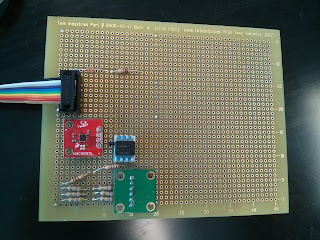30 June 15
We have begun doing research on the calculations on how we plan to fill this balloon. We need to know a few things, such as how many cubic feet we need to put into the balloon. How much lift that will generate/how much is needed. What the diameter will be at several different altitudes, and when the burst diameter will be reached. We also want to be able to predict the flight path of the balloon. A couple of resources we have accumulated for this include: Flight Predictor Burst Predictor Prelim Equations More Equations Our initial goals are: Ascent Rate: 5m/s Burst Altitude: 35,000 Meters Descent Rate: 3-5m/s Payload weight: 6lbs (mass: 2.7kg) Balloon type: 3000 gram (Oops, that's a little big) Also we received the SD cards for the GoPro today, 2x 64Gb Samsung Evo SD Cards . We have been testing the settings on the gopro and think we are going to settle for something like the 10MP Time Lapse with an interval somewhere along 1-5 seconds.



